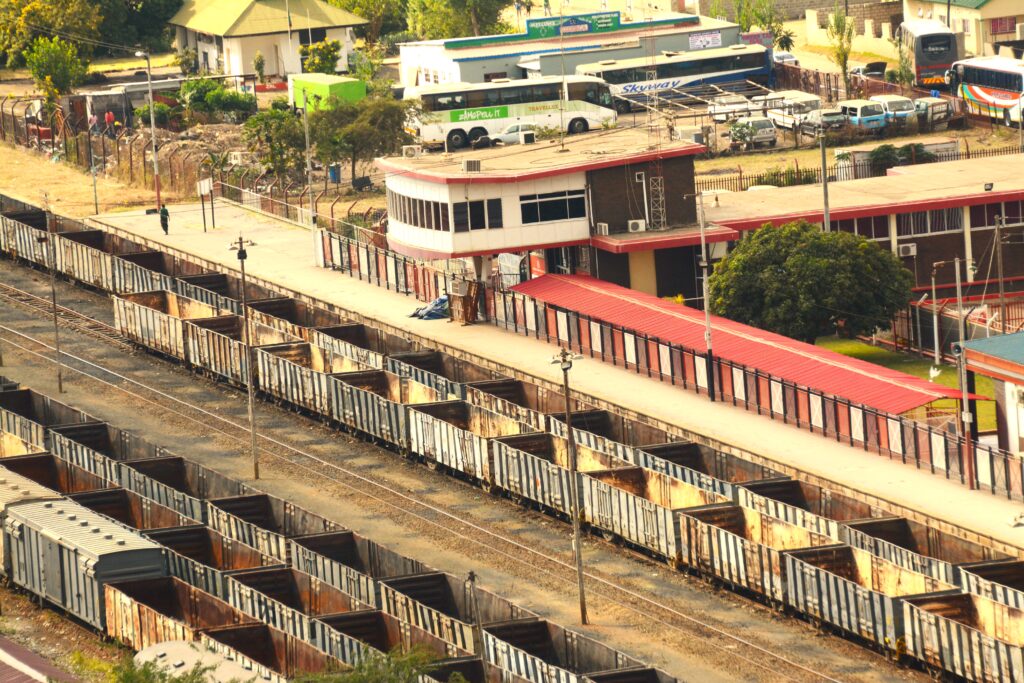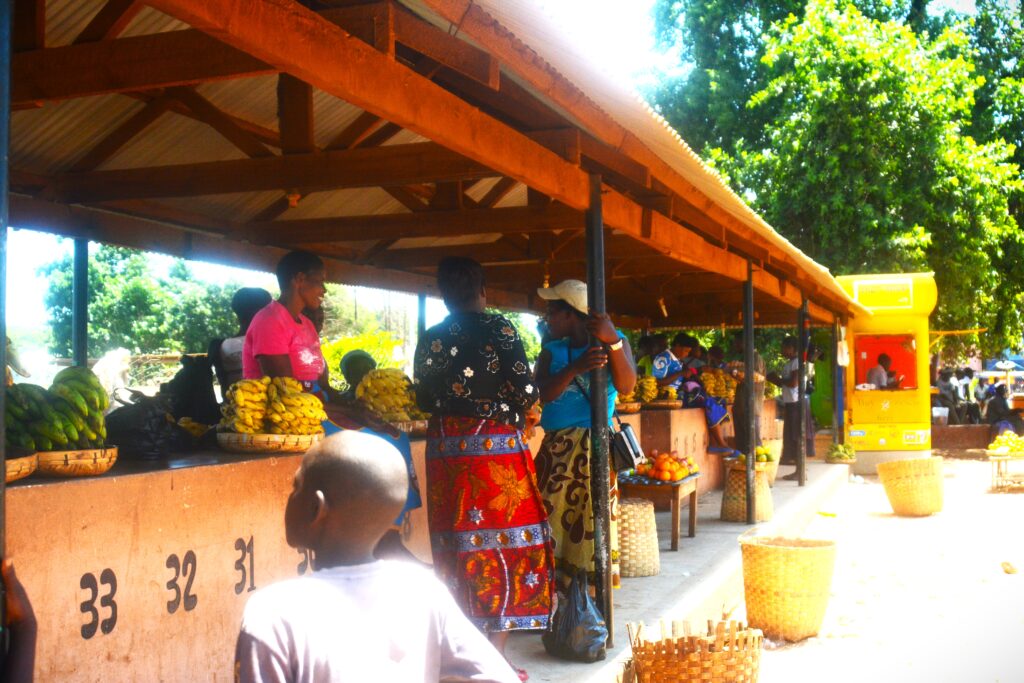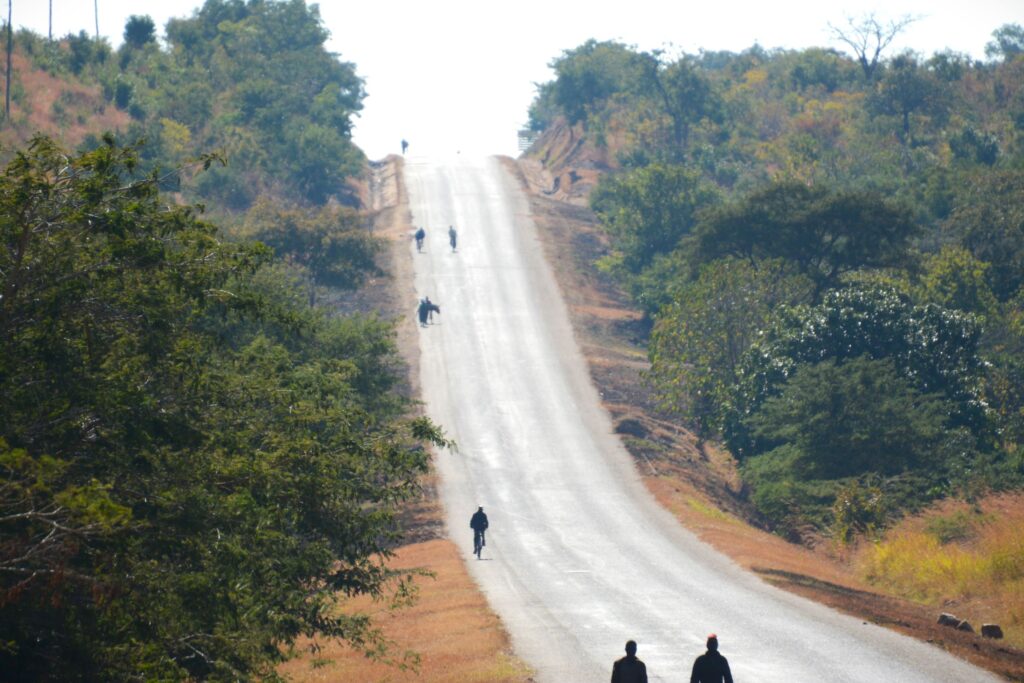by
Mwizenge S. Tembo, Ph. D.
Emeritus Professor of Sociology
Author of the Internationally Acclaimed Romance Adventure Novel: “The Bridge”.
I was a village boy who was going to see the train for the first time any second now. My dad and I had just completed a grueling sixteen-hour bus trip from the remote Eastern Province of rural Chipata district of Eastern Province of Zambia. We were dusty, black and blue just from the physical pounding we had endured on the 600Km bumpy bus ride on a gravel road. We had spent the wee hours of the morning on the Zambia Railways concrete platform station and I was seconds away from seeing the train. I stared in the southern province direction with great anticipation of the rail tracks as the train approached. I first saw the engine’s bright white head light.
First it was the loud moaning piercing melodic steam whistle blow that echoed around the adjacent downtown skyscrapers of Cairo Road in Zambia Capital City of Lusaka. I saw the billowing thick black smoke. Then the train platform vibrated as the massive engine thundered by amidst a loud cacophony of screeching metal, sparks, and jets of white steam furiously shooting from the sides of the massive engine. The train gradually ground to a halt. Suddenly doors flung open and people poured out of the passenger cars like ants as my dad and I excitedly moved forward to board the train to Kitwe. The legend and my dream of the train had met with my reality. I was ecstatic. It was just as my uncles had described in the village but even more exciting. This was to be forever my life before and after I first saw the train.

My uncles had traveled from our African village to work in plantations 1,600Kms or one thousand miles away in the former British colonial Southern Rhodesia and now Zimbabwe in the 1940s and 50s. Some relatives had gone as far as Johannesburg and Cape town in South Africa which were almost 3,200Kms or two thousand miles away. They told riveting romantic stories about the train on their return to the village.
The train was an imposing technological phenomenon. But there is an aspect of it that creates tremendous enchantment. I experienced the wonder during that first train ride from Lusaka to Kitwe in Savannah Africa in the mid1960s. My dad and I were riding in a third-class car. I stuck my head out of the window to the blowing wind and a vista of short grassland of the Savannah interrupted by commercial farms, grass hut villages, valleys, and grazing livestock.
At the first stop outside Chisamba, people ran along the sides of the train with oranges, guavas, bananas, biscuits or cookies, the famous yellow chikondamoyo home- baked buns spread with jam or butter, boiled eggs, and an assortment of soft drinks.
I had been warned that these traders often ran away into the bush with your change if you were not careful during the hasty transactions. Some crooked passengers also deliberately delayed in paying the traders until the train would take off with the trader running along the train shouting for his or her money as the train picked up speed. My dad had learned his lesson at Kacholola. He did not dare give the trader his cash until he had the items and paid with the exact change. No more asking for change from my now wise father.
One of the best things my father did for me was he bought me the famous chokondamoyo; the lover of life. Once it was in my hand, I stared at it and slowly took one bite. Like many town foods on this trip, I had never eaten anything like it before. It was mildly sweet with a rich aroma of what towns people called butter. It was bright yellow but a little chewy as if you were eating a piece of maize cake.
Once we resumed the trip the train picked up speed. When we reached a long bend, I could see the three long massive black bars below the engine synchronously moving rapidly making loud sounds: nashupika!!! geza njani!!!! Wauhhhhhhh!!!!! was the piercing loud moaning melodic steam whistle as the massive train passed road crossing after road crossing. It was a melodic sound beautiful and pleasing to the human soul as the black plume of smoke curved behind the engine spiraling into the blue sky of the savannah grasslands. Then the black smoke was evaporating into thin air.
Now I understood why people in my village at the time described the train as “moaning” and the loud chugging along was characterized as “nashupika” which is an indigenous word for “to suffer”. They were almost attributing human qualities to the chugging train’s effort that was hauling probably over a hundred cars including cabins. Since that first memorable train ride, I have come to understand why the train as a technological marvel became such a legend and inspired so much imagination.
My uncle Paulosi or Chimbaranga lived in Kwacha township in Kitwe. He had two twin brothers sons Charles and Elijah who were my age. Most of the town foods were new to me. The full cream milk was in a small rectangular plastic container with Drinka Pinta insignia cartoon of a smiling cow on it. The sliced Supaloaf bread was in a reddish white plastic covering. I thought the taste and flavor of the bread could not compare to the strong aroma of the yeast buns baked at Molozi bakery back in rural Chipata. My cousins took me to the Kitwe Round Table playground which was near mayadi or high income neighborhood which used to be reserved for Europeans only during the colonial days of British racial segregation before Zambia’s independence in 1964.
One day down town Kitwe, I was standing on a street corner when I saw this big seven ton lorry turning a corner and behind the wheel was a Zambian woman wearing a colorful duku. My eyes must have almost popped out of my sockets because of my utter disbelief that a woman could drive a lorry!!!? Such things happen in cities and towns. I never forgot that significant rare event in Kitwe during the rest of my life.




